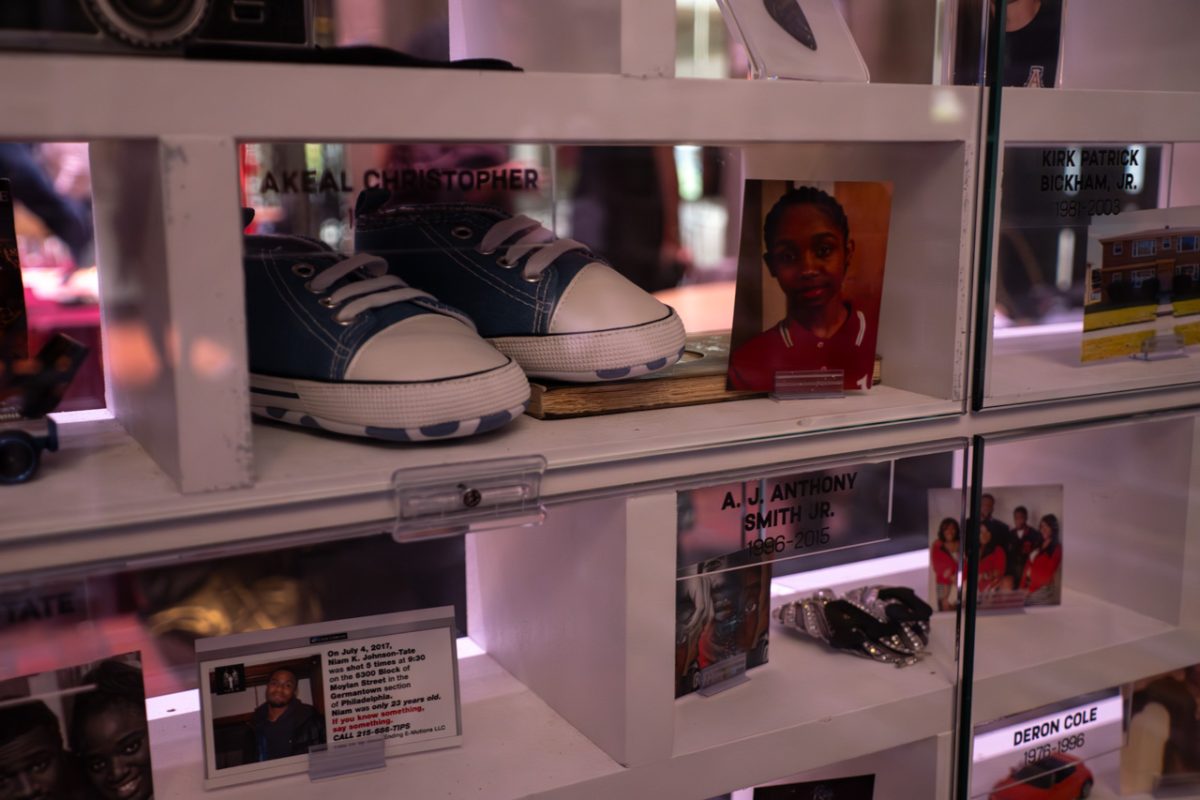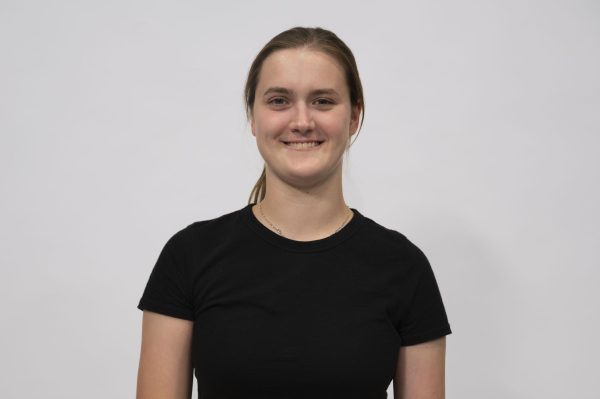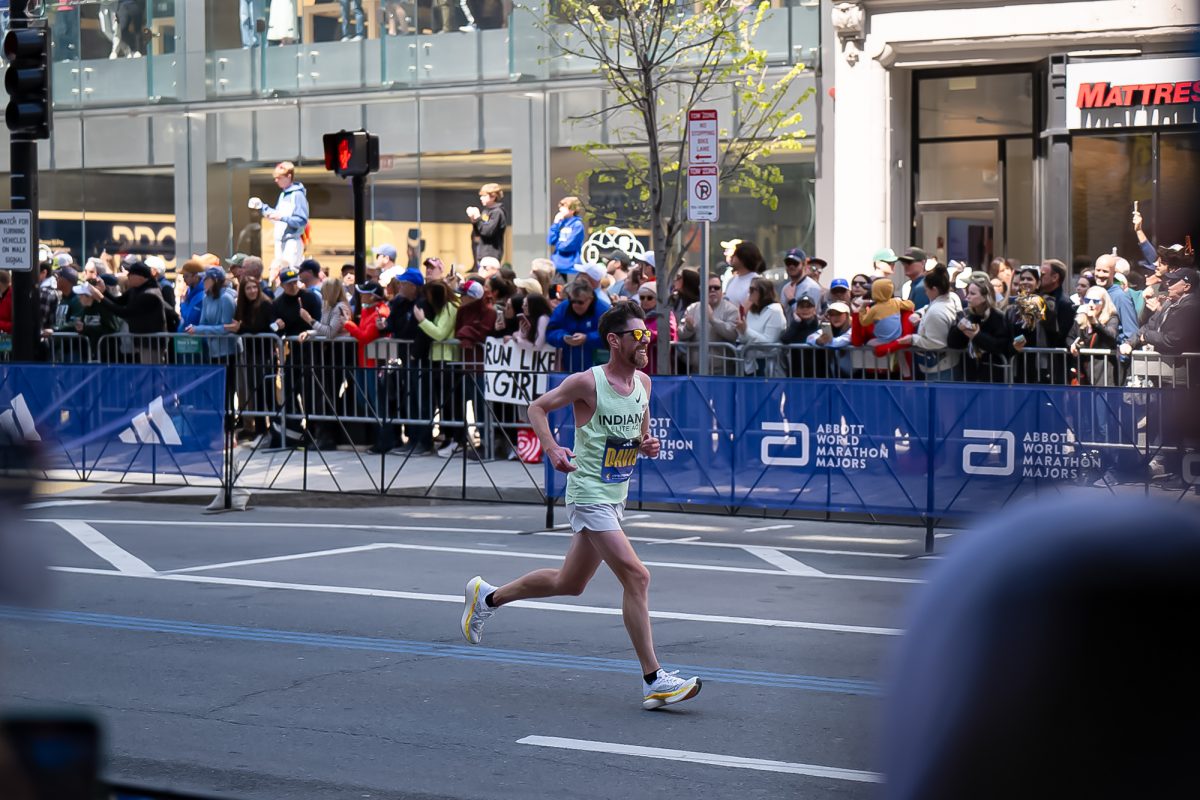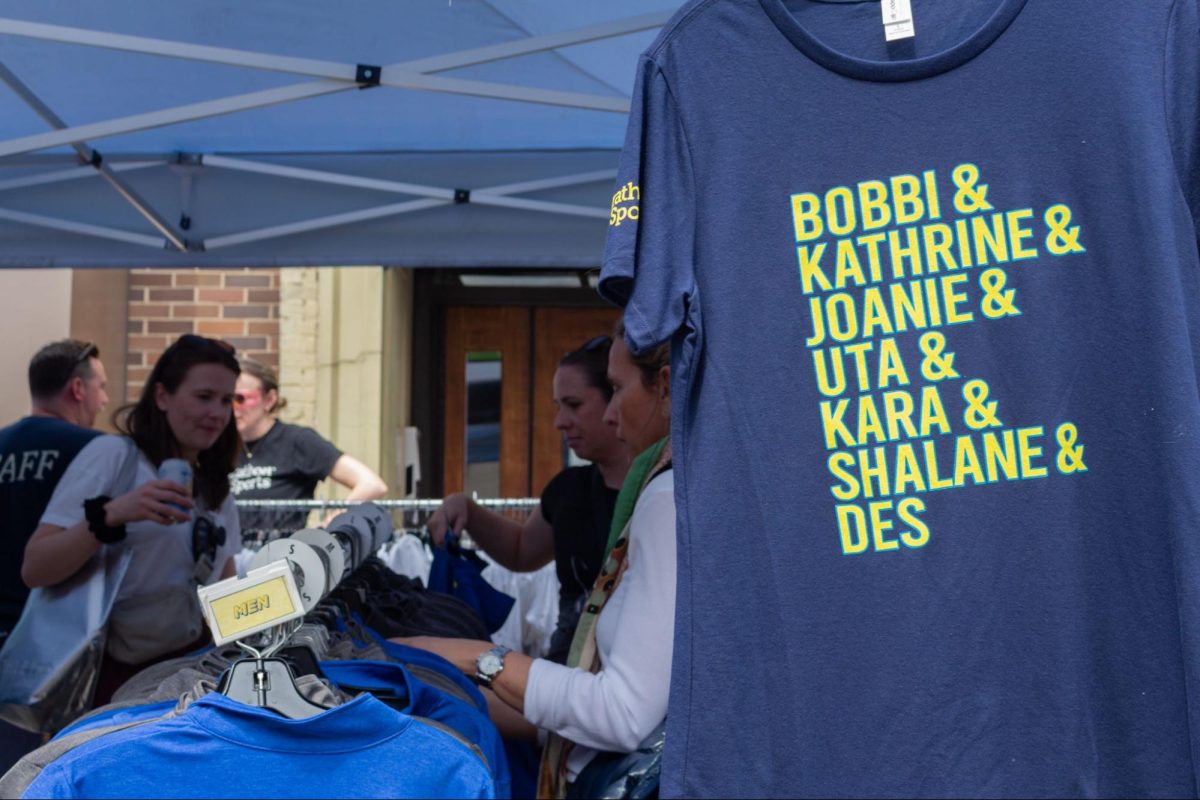On the third-floor mezzanine of Boston City Hall, there now stands a sobering structure: a glass house made of 700 translucent bricks. The total number of bricks depicts the average number of gun deaths per week in the United States. Inside the clear blocks, small tokens represent victims of firearm violence. Their names, alongside sonograms, bracelets, toys, photographs and other objects, reanimate victims’ memories and place viewers at eye level with each life lost.
The exhibit is one of four glass houses around the city, including two at the Institute of Contemporary Art, or ICA, and one at the MASS Design Group gallery in Boston’s South End. The four memorials make up The Gun Violence Memorial Project: a collaborative effort between the Mayor’s Office of Arts and Culture, the ICA, the Louis D. Brown Peace Institute, the MASS Design Group, Songha & Company and Purpose Over Pain.
The project was started in Chicago by two mothers, Pamela Bosely and Annette Nance-Holt, who both lost their sons to gun violence. Together, they started the organization Purpose Over Pain, gathering grieving families to tell their stories and heal as a community.
“This is not a static memorial,” Bosely said. “This is not a temporary moment in time where you just come, you look and you walk away. Know this is something that is supposed to stay with you. This is something that’s supposed to walk away with you and impart on your mind, on your heart.”
Over a dozen such families attended the exhibit in Boston on Tuesday, Sept. 17, each wearing the name(s) of their lost loved ones.
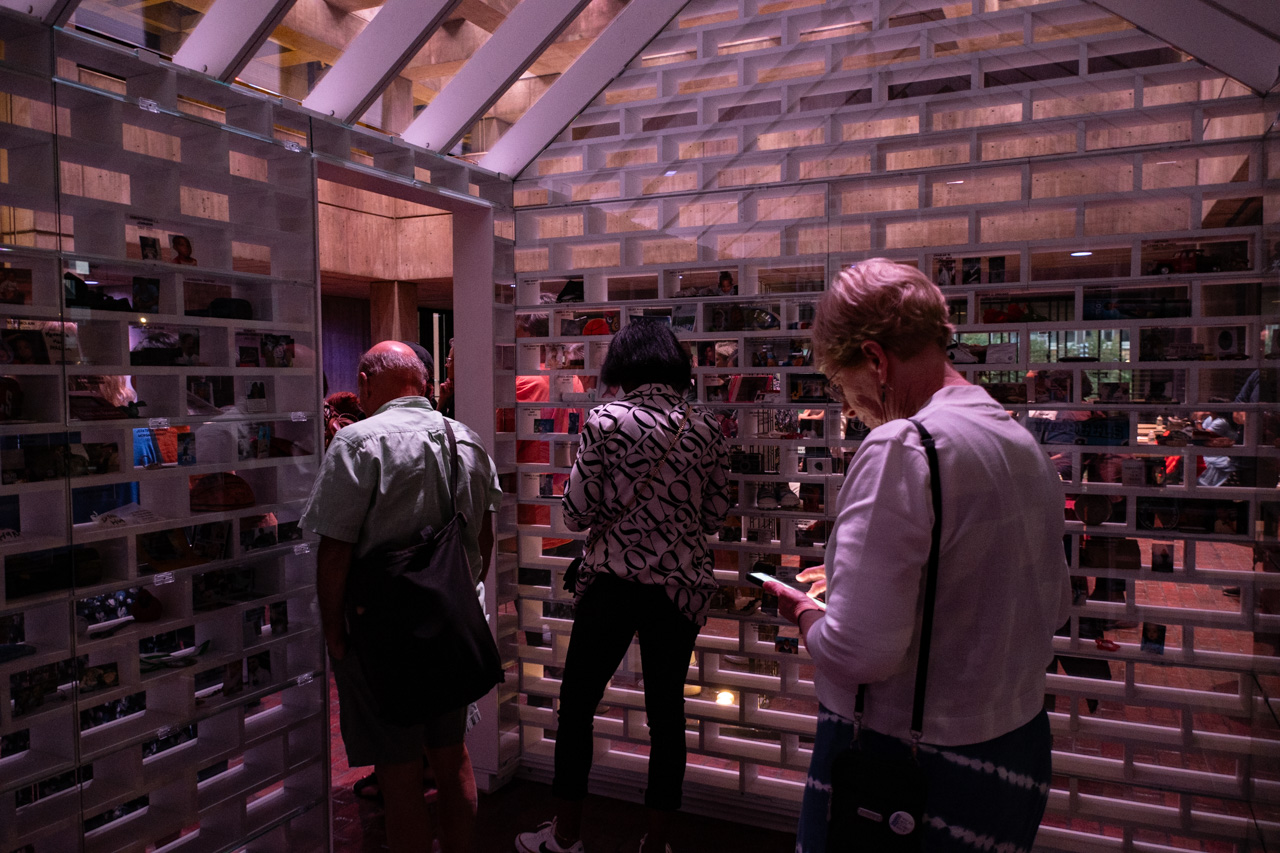
Sharon Purnell lost her only son, Damien, and husband, Larry, to gun violence. Damien was shot when he was 31 years old in 2017 and Larry at 64 in 2022, Purnell said.
“You don’t wanna be in this group at all,” Purnell said. “There’s only grace and mercy keeping all these families — mothers or fathers — together.”
Stephen and Kimberly Porter lost their son John Allen Kendrick III to a shooting in Chicago.
“When you lose a child, there is nothing similar or even worse. Nothing,” Kimberly Porter said.
Kendrick III’s daughter was born just three days after his murder. The Porters said they are grateful for the memorial and its ability to keep their son’s memory alive. They plan on bringing the baby to see her father’s artifacts in the glass house one day, they said.
In order to make a lasting impact on the memorial’s audience, the program incorporates art, exhibiting the houses at the ICA before coming to City Hall. The memorial received over 10,000 visitors in its first few weeks open to the public, according to Ruth Erickson, director of curatorial affairs at the ICA.
“I think we can become immune to hearing numbers and statistics,” said Christine Ilewski, a gun violence survivor and artist. “So when you see a personal memento like here in the glass houses, or you look into the eyes of a portrait of an individual child, it hopefully resonates with you, and you feel something and maybe take action.”
The nature of the memorial effectively demands action from its guests, as the memorial itself is incomplete.
“The memorial as a structure is as filled, as much as it is yet to be filled,” said Erickson. “it is both a rendering of this presence and this absence that is so powerful in this space.”
While the occupied bricks contain devastating loss, empty ones also convey a message: The year is not over, and the death toll will only keep climbing. Since 2018, the figure of 700 deaths by guns per week has increased to over 800.
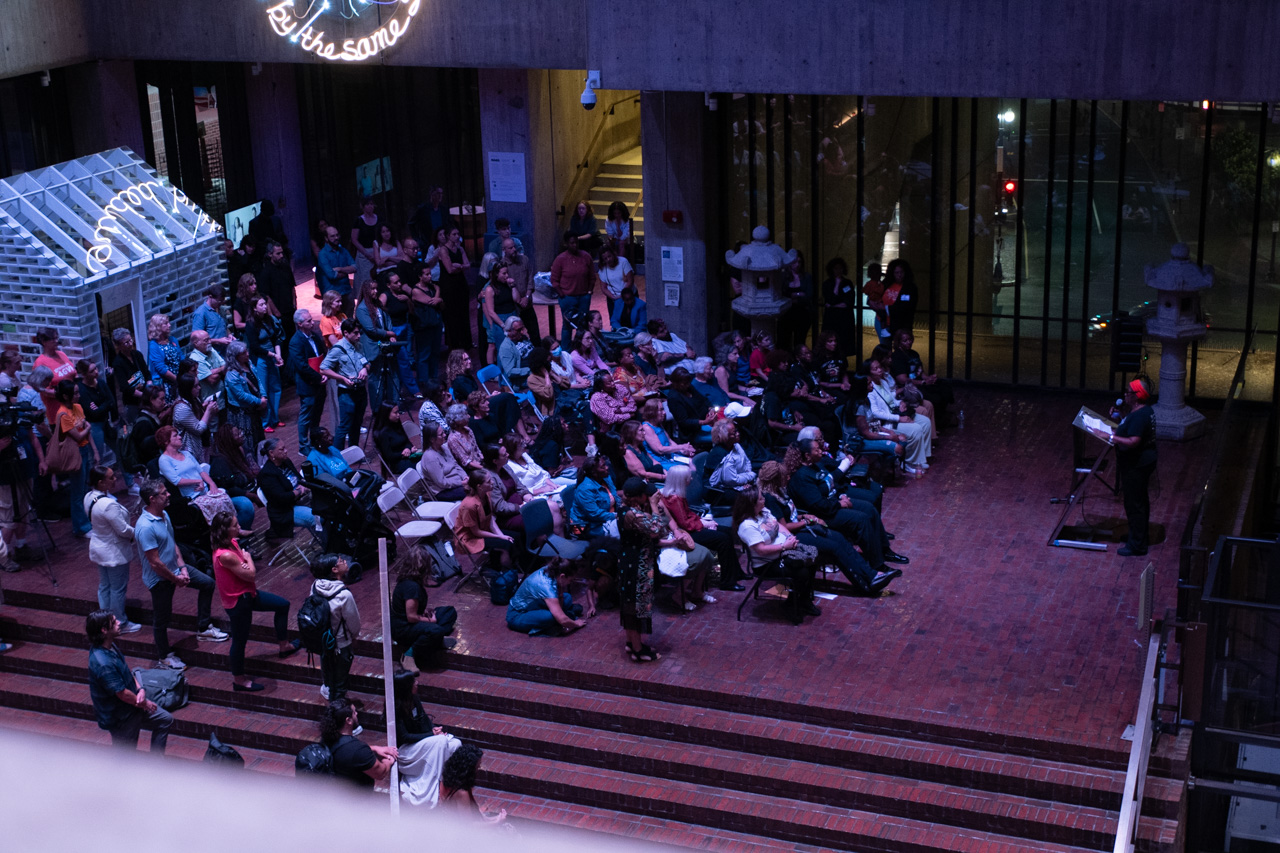
“It can be anybody. You can go to school, you can ride a bus, you can go to church, you can be at the City Hall, you can be anywhere,” Bosely said. “So I’m challenging everybody here today to make a difference.”
The Huntington News is dedicated to serving the Northeastern University community with original, professional reporting and creating an environment in which student journalists can learn from one another. Support an independent, free press at Northeastern University with your donation today.


